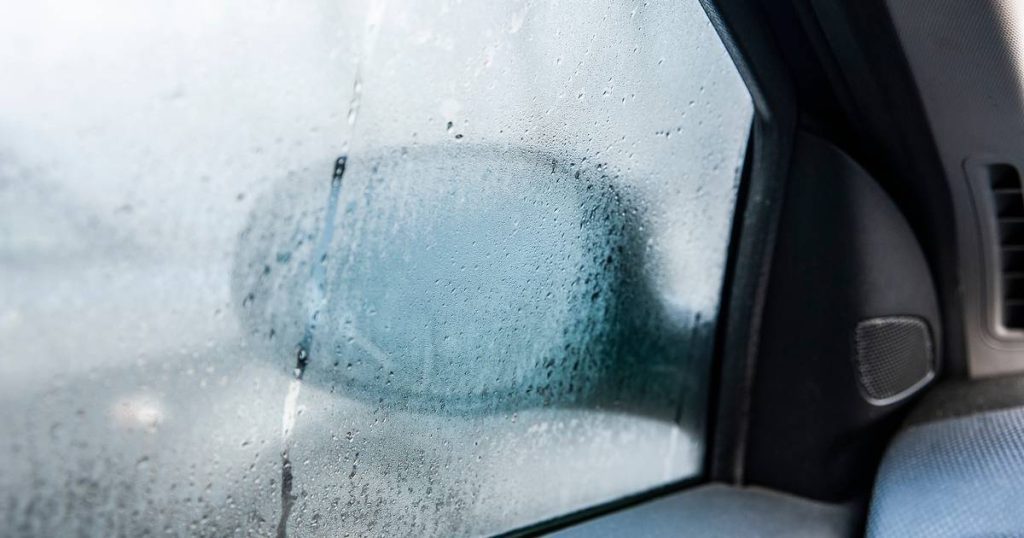Foggy car windows are annoying. Without conditioning, it requires a fair amount of wiping with a dry cloth. In extreme cases, it will also be necessary to scratch the interior in case of frost. But how does this condensation form?
In cold, humid seasons, windows fog up more quickly because cool air stores less moisture than warm air. Especially at night, that moisture that gets into the car through clothes and shoes condenses on the cold windows. Once moisture is in the car, it doesn’t just go away. Certainly not in cars that are rarely driven. So it is often the second car in the family that suffers the most. After all, cars that are driven a lot dehydrate themselves through prolonged use of heating and air conditioning.
Besides physics, there is another reason: carelessness. With a little care, a few simple steps, and the right accessories, problems can be fixed quickly. If your windows still fog up after following the tips below, only your garage can help. For example, if door, window, or sunroof seals are porous or cracked, they need to be replaced.
Keep drains clean
When dirt and leaves clog the rainwater drainage channels, water accumulates. It is not uncommon for it to seep in over time. Exhaust ducts are located between the windshield and hood, in the sunroof, and sometimes in the rear of the vehicle as well. Often enough to remove dirt. Then check with a little water whether the water is flowing.
Replace the internal filter
A clogged cabin filter can also cause moisture in the car. Dust and dirt prevent the air from circulating optimally. In addition, fungi and bacteria are given a chance, so that a contaminated pollen filter poses a health hazard. A new filter costs about 15 euros. High-quality activated carbon filters not only filter pollen and dust, but also nitrogen oxides (NOx) from the air.
Leave the moisture out
Check that the ventilation ducts are open and that the ventilation is not set to recirculation, as the vehicle will no longer be ventilated. So turn on the ventilation and heating – warm air absorbs more moisture than cold air. In addition, it is useful to open the windows for a short time to let out moist air.
Use the air conditioner
Although many people use the air conditioner only to cool off in the summer, it should be used regularly in the winter. Regular use lubricates seals, prevents bacteria and odor build-up and increases shelf life. In addition, air conditioning removes moisture from the air more effectively than heating.
Keep the car dry
To keep the car dry, wet clothes should be removed before riding. Put wet coats in the trunk so the seat upholstery doesn’t absorb moisture. If necessary, remove wet mats from the vehicle to dry. If you have a dry garage or parking lot, you can leave the window open so you can ventilate the car.
Use a dehumidifier
Special moisture absorbing products are available to dry out moist indoor air. These special pillows cost about 10 euros and can be placed inside. They remove moisture from the air, and once full, they can be dried on the stove and used again. Alternatively, cat litter can be put into an old sock and put in the car, but this product cannot be reused.
Scrub the windows with some shampoo
On the inside of your windshield, you can rub the window against steam deposits with a little cleaning agent or shampoo.
Maintain your car
If the gaskets and rubber become porous, moisture can penetrate here as well. To avoid this, it can be kept flexible with proper care. Talcum powder, petroleum jelly or other special care products are suitable for this, for example.
Unlimited free access to Showbytes? Which can!
Log in or create an account and never miss a thing from the stars.

“Total coffee specialist. Hardcore reader. Incurable music scholar. Web guru. Freelance troublemaker. Problem solver. Travel trailblazer.”







More Stories
Bitcoin price rises after new jobs data from US
European stock markets open higher | beursduivel.be
Russia’s oil imports to China decline